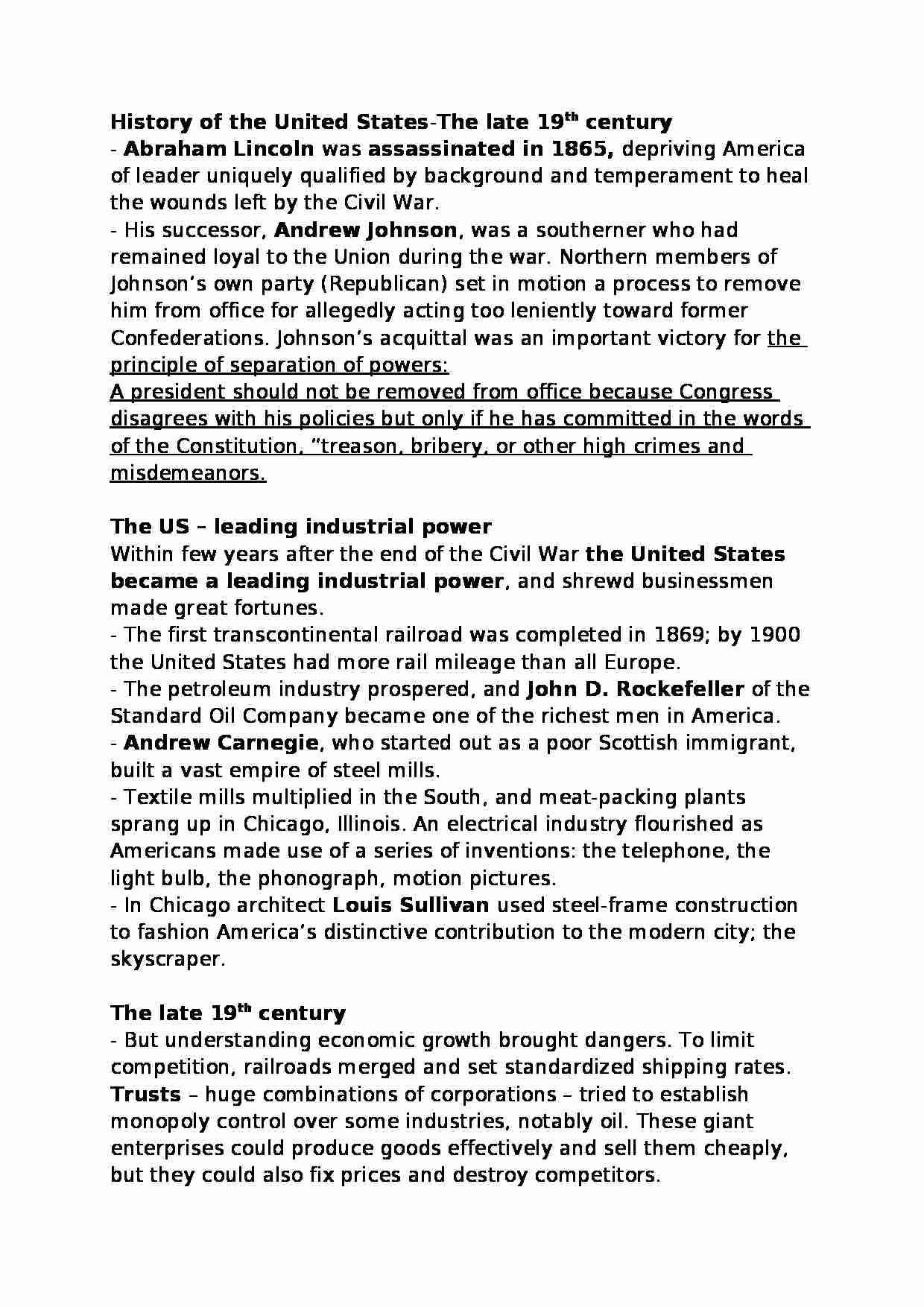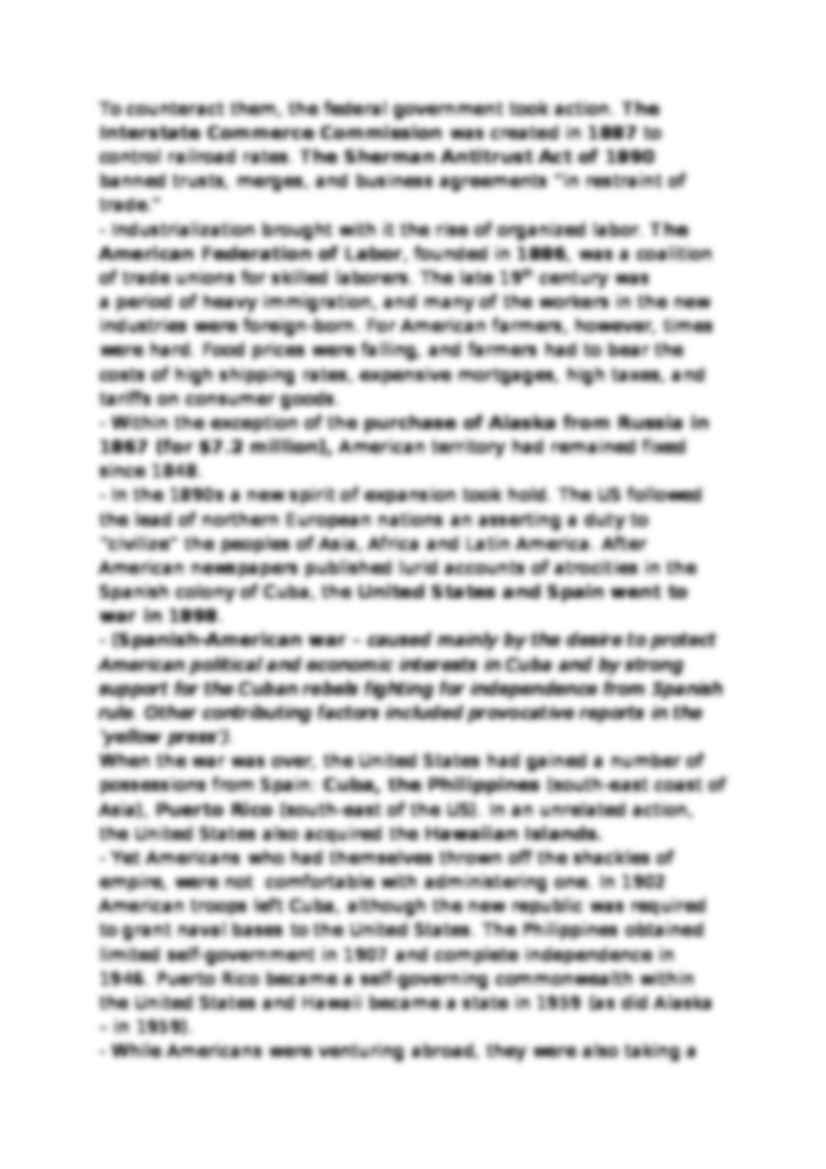To tylko jedna z 3 stron tej notatki. Zaloguj się aby zobaczyć ten dokument.
Zobacz
całą notatkę



History of the United States-The late 19th century - Abraham Lincoln was assassinated in 1865, depriving America of leader uniquely qualified by background and temperament to heal the wounds left by the Civil War. - His successor, Andrew Johnson, was a southerner who had remained loyal to the Union during the war. Northern members of Johnson's own party (Republican) set in motion a process to remove him from office for allegedly acting too leniently toward former Confederations. Johnson's acquittal was an important victory for the principle of separation of powers: A president should not be removed from office because Congress disagrees with his policies but only if he has committed in the words of the Constitution, “treason, bribery, or other high crimes and misdemeanors. The US - leading industrial power Within few years after the end of the Civil War the United States became a leading industrial power, and shrewd businessmen made great fortunes. - The first transcontinental railroad was completed in 1869; by 1900 the United States had more rail mileage than all Europe. - The petroleum industry prospered, and John D. Rockefeller of the Standard Oil Company became one of the richest men in America. - Andrew Carnegie, who started out as a poor Scottish immigrant, built a vast empire of steel mills. - Textile mills multiplied in the South, and meat-packing plants sprang up in Chicago, Illinois. An electrical industry flourished as Americans made use of a series of inventions: the telephone, the light bulb, the phonograph, motion pictures. - In Chicago architect Louis Sullivan used steel-frame construction to fashion America's distinctive contribution to the modern city; the skyscraper. The late 19th century - But understanding economic growth brought dangers. To limit competition, railroads merged and set standardized shipping rates. Trusts - huge combinations of corporations - tried to establish monopoly control over some industries, notably oil. These giant enterprises could produce goods effectively and sell them cheaply, but they could also fix prices and destroy competitors. To counteract them, the federal government took action. The Interstate Commerce Commission was created in 1887 to control railroad rates. The Sherman Antitrust Act of 1890 banned trusts, merges, and business agreements “in restraint of trade.” - Industrialization brought with it the rise of organized labor. The American Federation of Labor, founded in 1886, was a coalition of trade unions for skilled laborers. The late 19th century was a period of heavy immigration, and many of the workers in the new industries were foreign-born. For American farmers, however, times were hard. Food prices were falling, and farmers had to bear the costs of high shipping rates, expensive mortgages, high taxes, and tariffs on consumer goods. - Within the exception of the purchase of Alaska from Russia in 1867 (for $7.2 million), American territory had remained fixed since 1848.
(…)
… industrial power Within few years after the end of the Civil War the United States became a leading industrial power, and shrewd businessmen made great fortunes. - The first transcontinental railroad was completed in 1869; by 1900 the United States had more rail mileage than all Europe. - The petroleum industry prospered, and John D. Rockefeller of the Standard Oil Company became one of the richest men in…
... zobacz całą notatkę






Komentarze użytkowników (0)